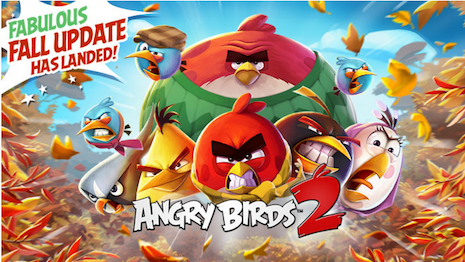 Ruffling feathers
Ruffling feathers
By Adam Cohen-Aslatei Your ads are not as great as you think they are. Every day, consumers are developing better and more sophisticated ways to avoid them. You can praise native ads all you want, but it is not a silver bullet. You can say that brands are becoming publishers until you are blue in the face, but the fact is that the vast majority of digital ads are still intrusive, irritating and, increasingly, creepy. So how does the industry make digital advertising work? The answer is actually quite simple. Instead of fighting with consumers, respect them. Give them autonomy and freedom. Give them something in return for their time. Value exchange, or reward-based advertising – aka “incentives” – is about to take center stage. Value mean Value exchange placements let people actively choose to engage with a brand in exchange for entertainment, points, Wi-Fi or digital content such as articles or music. Previously derided as bribery, value exchange is suddenly taking off for all the right reasons. Foremost, consumers love it because it puts them in control. No pop-ups, no interstitials, no blinking banners. Advertisers appreciate value exchange for different reasons. Value exchange units are always viewable, they are resistant to fraud, and they represent an elegant and much-needed solution to ad blocking. Additionally, the units create new inventory. Value exchange ads can be found on entertainment properties such as Pandora and Hulu. They also run on hyper-popular games and leading editorial sites. And, most importantly, value exchange ads consistently deliver the best results in the industry, especially on mobile. A recent study showed that users who previously never made an in-app purchase are 4x more likely to make a purchase after engaging in a value exchange video. A separate study showed 86 percent greater brand awareness with value exchange, compared with Vizu benchmarks. Yet another study by Woobi proved that rewarded audiences are twice as likely to interact with brands as compared to live television. Performance does not lie and value exchange continues to deliver time and time again. So why the resistance? The answer may be inertia. Block and tackle We have been interrupting people ever since the industry started, and this method is not going away overnight. Additionally, the quid pro quo concept rubs some advertisers the wrong way. We are simply not used to partnering with our consumers. When Google reports that more than 46 percent of digital video ads go unviewed, and eMarketer reports that in 2017 more than 86 million Americans will use an ad blocker – an increase of 32 percent over 2016 – it is overdue for some important changes. Upon further thought, the value exchange concept is not new. Television ads, radio ads and even pre-roll are all incentivized – we sit through them to get to the content. The only difference with modern value exchange is that we give people a choice. And that is key. Value exchange delivers an active and engaged audience that just is not possible with interruptive media. Users of value exchange products have experienced video completion rates of up to 99 percent, with engagement rates that are more than 2x that of industry benchmarks. And value exchange solves the ad-blocking quandary. More than 25 percent of U.S. consumers use ad blocking technology today, costing publishers upwards of $22 billion in lost revenue globally. According to a recent Interactive Advertising Bureau study, the number one reason for disabling ad blockers was to gain access to content. Apps, on the contrary, largely avoid ad blockers due to the nature of their design. And audiences that engage with value exchange, in general, are less likely to use ad blockers because they are aware of the value transaction, and opting in to gain access to content and rewards on their own terms. Birds of a feather Even large players such as Google, News Corp and Viacom are adopting value exchange formats. For example, with Google’s consumer survey app, users can take survey questions to earn Google Play credits. Publishers such as The Daily Globe and The Los Angeles Times use value exchange to help monetize their content without paywalls. Here, people choose to engage with an ad in exchange for a premium article. Other major publishers such as Angry Birds creator Rovio, Kik Messenger and AT&T use value exchange and reach millions of individuals in brand-safe environments. And brands such as Honda, Pizza Hut, Disney, AngelSoft, Dos Equis and Samsung have all used value exchange to engage with their consumers. Value exchange has its origins in the digital gaming space, and companies that produce top games such as Kim Kardashian’s Hollywood, FarmVille and The Sims made value exchange units a key part of their products because they work, and because users prefer them. According to Unity Technologies, 71 percent of users said watching video ads is their preferred way to access in-game content, and 66 percent of respondents want more opportunities to earn rewards through ads. Seventy-one percent of in-app gamers prefer games with opt-in ads to games without. And89 percent of gamers recall value exchange ads, which is roughly twice that of TV viewers. NAYSAYERS WILL likely continue to resist value exchange, just as they did with display ads, pre-roll ads and mobile ads in the past. It will not matter. Advertiser demands for greater transparency and effectiveness, coupled with consumers’ increasing power of choice, will inevitably make the units more popular. In other words, get ready to see sweeping changes in ad tech, brought to you by an unexpected underdog: value exchange.
 Adam Cohen-Aslatei is senior director of marketing at Jun Group
Adam Cohen-Aslatei is senior director of marketing at Jun Group
